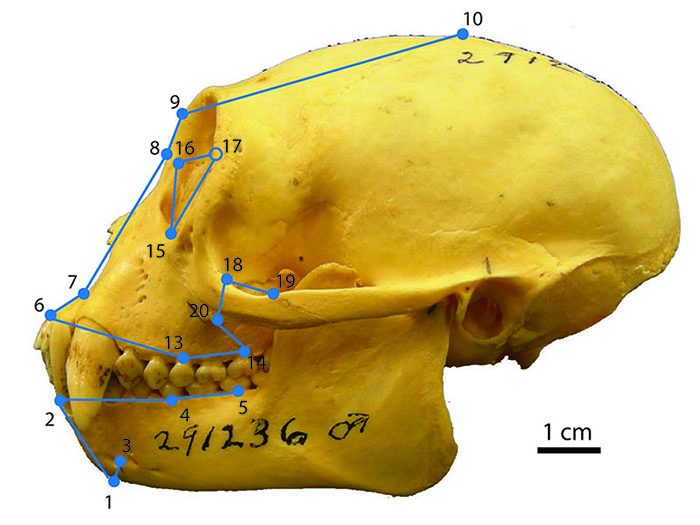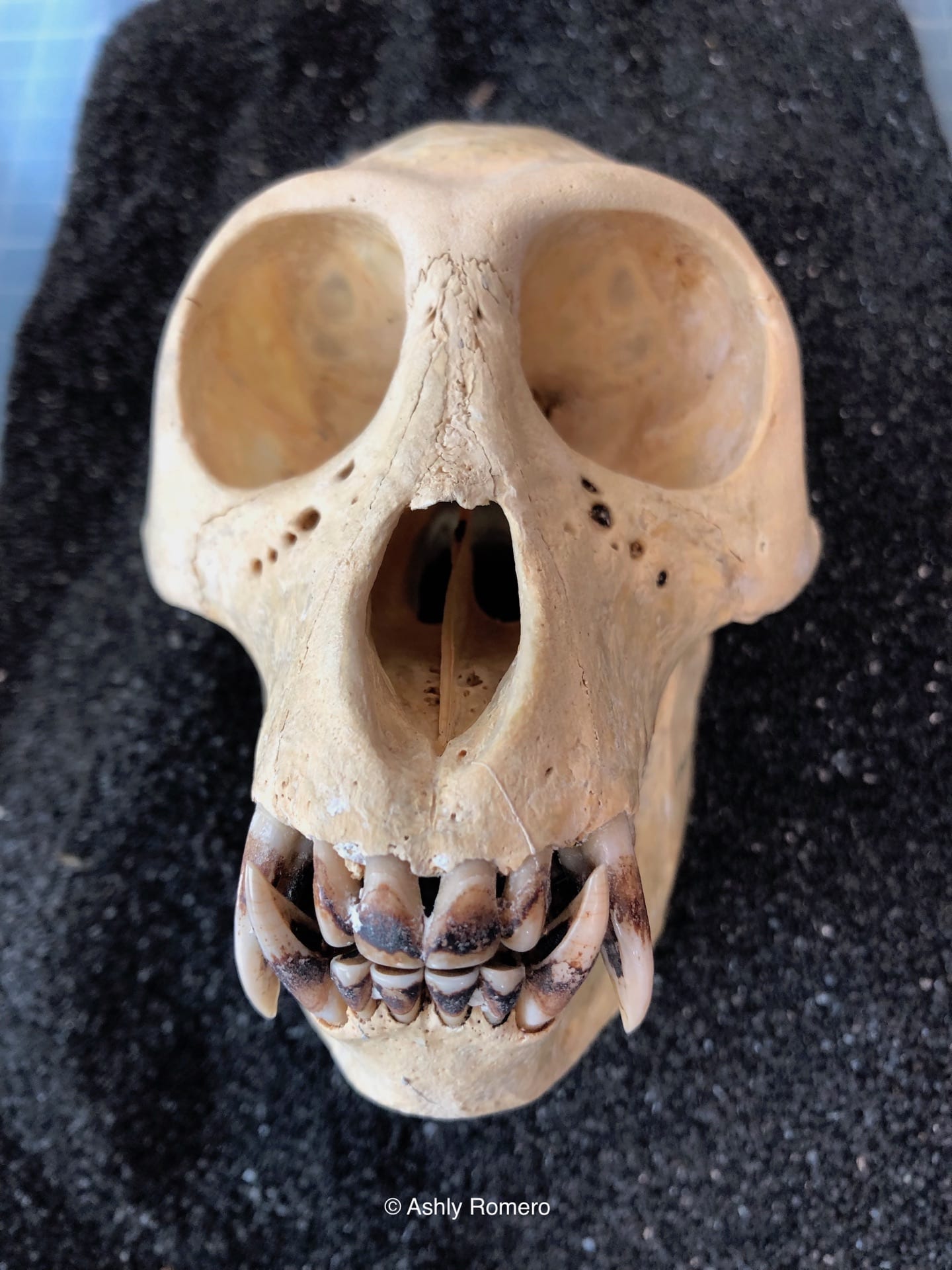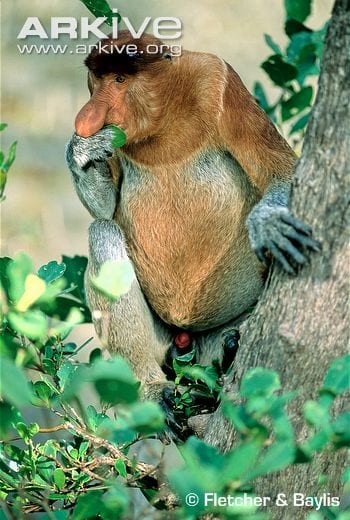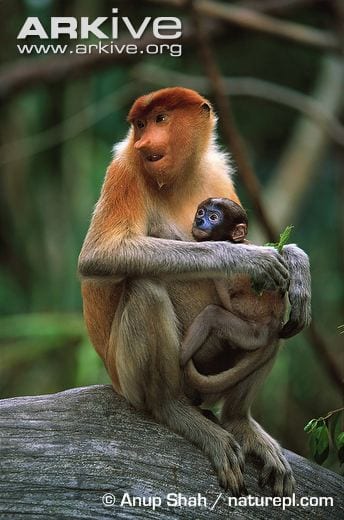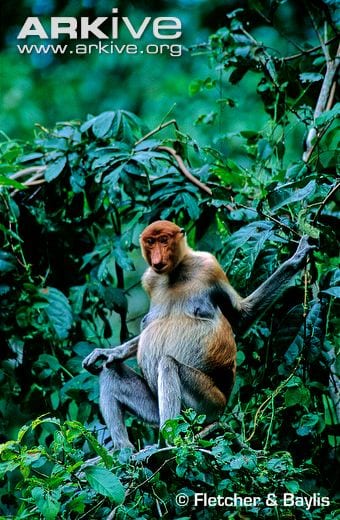New year, new monkey! We hope you’re all excited to learn about a Southeast Asian primate with an unusually large schnoz – the proboscis monkey (species name Nasalis larvatus)! Male proboscis monkeys have a bulbous nose (like Grumpy or Squidward) that is much bigger than the Dopey-like female nose, and many males have a body about twice as big as females. These differences in nose shape and overall body size are called sexual dimorphism, meaning different forms in males and females of a species. Large-nosed males exist because females like it, something we call sexual selection (1). When females choose males with larger noses to mate with, then these large noses are passed down to male offspring, and the preference for larger noses is passed down to female offspring. However, this nose shape mostly differs in outward appearance because the bony part of the nose looks very similar in males and females. We’ve added some photos below for you to compare them yourself!
This big nose that females like so much actually has a pretty interesting use. Some studies suggest that it acts as a sort of resonating chamber, which means males with larger noses have louder calls (2). The rainforest can be a very hard place to see other monkeys, so a back-up way of attracting mates can make you much more successful. Even if female proboscis monkeys can’t see the males through the trees, they can hear them, and males with bigger noses are much easier to hear.
The proboscis monkey is an Old World monkey, or Cercopithecoid, which is divided into two groups: the leaf-eating Colobines and the fruit-eating Cercopithecines. Proboscis monkeys eat mostly leaves and walk around in the trees on all four feet (1). We call this mode of getting around arboreal quadrupedalism (arboreal=tree, quad=four, ped=feet). Leaves are hard to digest, so the teeth and guts of proboscis monkeys are specially adapted to aid in leaf-chewing and digesting. Most members of this species have somewhat of a potbelly that holds an extended digestive system for breaking down the leaves they eat (1). These monkeys also have teeth that are sharp and pointy for cutting up leaves while chewing (3). Imagine if you had some spinach and were given the choice of a rock or scissors to break them up with. The rock would smash it a bit without doing any real damage, but the scissors would cut right through! That’s exactly what the proboscis monkey teeth do to their leafy diet.
While previously more widespread, the proboscis monkey now only inhabits the island of Borneo, which is shared by Malaysia, Indonesia and Brunei (4, 5). They live in wet, swampy, tropical forests in groups consisting of a single male and multiple females or entirely males. Sadly, proboscis monkeys are endangered. There are currently estimated to be only about 1000 individuals living today. Habitat destruction for crops and housing, plus human hunting, continuously decrease the population sizes of these primates (5).
Male proboscis monkey eating leaves in the forest
Questions or comments? Please email Ashly Romero at anromero@uark.edu or check out the references below for further information.
References:
- Proboscis Monkey. ARKive http://www.arkive.org/proboscis-monkey/nasalis-larvatus/image-G24757.html
- Koda et al. (2018). Nasalization by Nasalis larvatus: Larger noses audiovisually advertise conspecifics in proboscis monkeys. Science Advances.
- Fleagle, JG (2013). Primate Adaptation and Evolution. Academic Press: USA.
- Nasalis larvatus. Animal Diversity Web https://animaldiversity.org/accounts/Nasalis_larvatus/
- Nasalis larvatus. IUCN Redlist https://www.iucnredlist.org/species/14352/4434312#geographic-range
